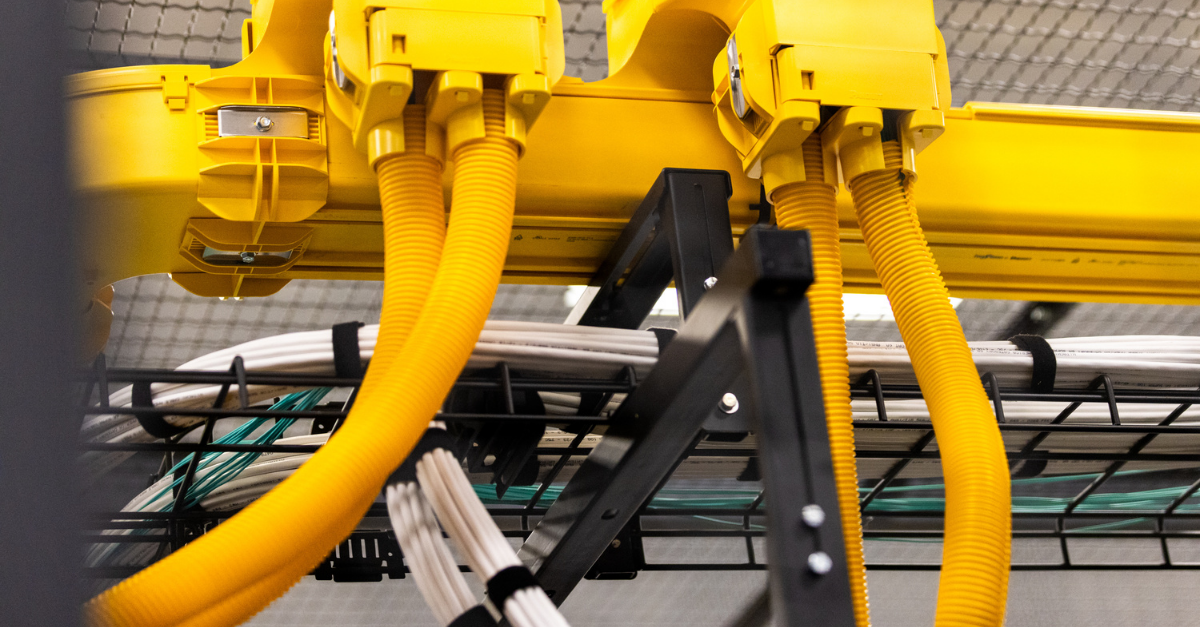Reshaping your approach to digital infrastructure
In the fast-evolving digital landscape, staying ahead of the curve isn't just advantageous; it's imperative for business survival. The recent webinar with Flexential COO Ryan Mallory and VP of Channel Sales Melissa McCoy explored the future of connectivity and highlighted the seismic shifts underway in digital connectivity and infrastructure, offering insights into how businesses can navigate this new terrain.

The new connectivity frontier
With the influx of AI applications comes the growing demand for increased data management and interconnection strategies requiring a revolutionary overhaul. The era of gigabit speeds is giving way to terabit demands, an escalation that's pushing the boundaries of current infrastructures. The traditional approach to digital infrastructure, rigid and static, is no longer viable in a world where agility and scalability are king.
“The interconnection landscape is changing dramatically. Over the past two years, we've seen this massive adoption of AI and the need for connectivity going through the roof, and you're starting to hear the providers talking about a fiber crunch because the demand capacity is moving from Gigabit to terabit […] these are all things that are going to drive you know a dynamic shift in the interconnection consumption but also how we start to provide your connection out to the end customers.”
—Ryan Mallory, COO, Flexential
To navigate this change, businesses must adopt a disciplined approach to planning and collaboration with customers and partners. The dynamics of the digital landscape demand that businesses stay ahead of the curve with product sets that can cater to their evolving needs.
A major hurdle is time to market. In the tech world, every component—from large-scale infrastructures like data centers to minute elements like switches and fiber—is affected by the supply chain. Consequently, businesses require near real-time access to network resources.
Interconnection challenges
The increase in data consumption and cloud computing is significantly influencing the need for advanced interconnection strategies. The AI companies deploying into data center environments are experiencing a surge in the number of physical cross-connects and the volumes of capacity. This is due to the addition of the GPU component, which is massively influencing the backhaul to these learning nodes and the interaction with end customers. Furthermore, the evolution of a cloud-first and cloud repatriation model is necessitating a more robust and thoughtful approach to connecting these types of workloads and segmenting businesses.
The challenges of remote work, distributed teams, and the increasing importance of edge computing are also influencing businesses to adapt their interconnection strategies. The shift from core office locations to home or new markets has led to a change in overall IT infrastructure and network architectures. This has necessitated the establishment of network hubs to aggregate customer workloads and enterprise applications. Additionally, the need for high-capacity connectivity and access to services with latency requirements has led to a revolutionary change in capacity to the edge.
“When you start to look at edge computing […] the need to have high-capacity connectivity as well as accessing gaming services that had latency requirements, you saw this revolutionary change in capacity to the edge. […] And when you have this latency requirement, network providers are addressing that. We have facilities in what were traditionally Tier 2 markets, so we're able to address that, we're able to create that distribution, and it's driving a much deeper relevance in some of these markets that were emerging over the past 10 or 15 years. They're now our prime core markets.”
—Ryan Mallory, COO, Flexential
Another challenge that businesses face is planning. As businesses move towards a virtual environment or a cloud-based infrastructure or even adopt AI, they need to understand how to address the changes that come with these shifts. Building prioritization profiles and understanding how to adjust their interconnection strategies to adapt to new challenges is crucial.
Strategies for business growth
The need for agility and scalability is driving innovation in connectivity, and businesses must be able to adapt their solutions to meet changing customer needs. This includes having product offerings that can evolve to address new requirements. Automation and self-service, which used to be nice to have, are now table stakes. Customers want the flexibility to spin up and spin down virtual circuits with access to the public cloud and manage and monitor their overall IP or internet bandwidth capabilities.
“The key to driving a broader interconnection consumption model is enhancing the ecosystem […] it's how can you bring more people into the ecosystem as easy as possible. So, it's really about leveling that playing field […] We want to flatten the overall data center environment, and we want to make every market available as an extension of the enterprise.”
—Ryan Mallory, COO, Flexential
In terms of industry trends and market innovations, the interconnection evolution combines the 5G world with the edge data center and utilizes the infrastructure that ties the data centers together. These changes necessitate a fresh business approach to interconnection to stay at the forefront of these developments and drive growth and success.
Flexential Fabric: The game changer
The webinar introduced Flexential Fabric, a virtual IaaS platform that revolutionizes connectivity through single-port provisioning within an extensive ecosystem. With the agility and scalability that CIOs and CTOs crave, Flexential Fabric enables businesses to connect anywhere with any service within the ecosystem.
Offering real-time access to network resources and effectively addressing the time-to-market continuum, Flexential Fabric meets the needs of sudden, enterprise-level projects, thereby revamping business growth. As Mallory pointed out, this flattening of the enterprise and data center environment, along with enhanced network capabilities, holds the key to the future of interconnection strategies.
“It ultimately allows the CIO and CTO to have a virtual, private way out in the marketplace […] you're able to look at this and say ‘hey, what do I need to accomplish, how do I need to plan for the future, and gives you the ability to have a lot of flexibility and capabilities that you can offer into your enterprise […] and extend into ecosystems that other customers or other partners they have not had access to.”
—Ryan Mallory, COO, Flexential
Looking ahead, Mallory shared that Flexential Fabric plans to continue increasing capacity from a port size to access large-scale workloads. They also plan to increase capacity across the backbone to address customer needs. More virtualized services around matchmaking capabilities through the Flexential Xperience Portal are also in the pipeline. The goal is to ensure seamless end-to-end ordering, provisioning data updates, and dynamic programmable network capabilities. This will allow businesses to have dynamic flexibility in the overall workplace.
Final thoughts
As we navigate this digital revolution, it's clear that a new approach to digital infrastructure is not just beneficial but necessary. The Flexential webinar, “Explore the future of connectivity,” has shed light on the importance of a dynamic, adaptable interconnection strategy that can keep pace with the ever-increasing demand for connectivity and the relentless advancement of technology.
For a deeper dive into the future of connectivity and how it will transform your business, watch the full webinar on-demand and join the movement reshaping digital infrastructure.






